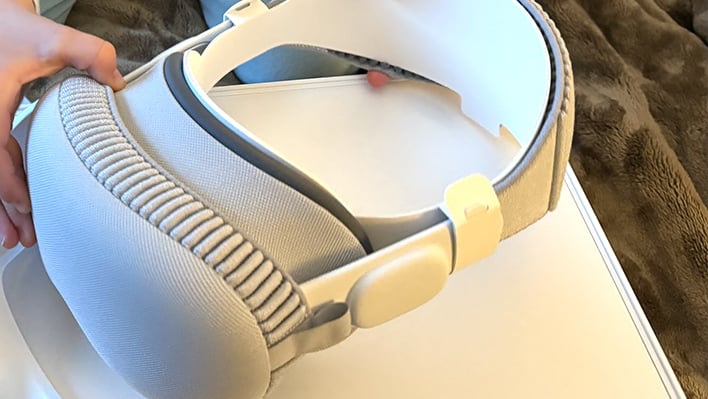 I have found several ways to mitigate these issues, starting with one’s position while using the device. Laying back on a couch or bed can help to distribute and support some of the weight, compared to sitting upright for a longer period of time. Another crucial aspect of Vision Pro is in the myriad of ways one can adjust it for maximum comfort.
I have found several ways to mitigate these issues, starting with one’s position while using the device. Laying back on a couch or bed can help to distribute and support some of the weight, compared to sitting upright for a longer period of time. Another crucial aspect of Vision Pro is in the myriad of ways one can adjust it for maximum comfort.
Apple includes two separate headbands in the box, and users may have better luck trying the second option if the stock configuration is not apt. I have found the solo knit band to be adequate, and the ease of putting the device on is straightforward along with acceptable comfort.
Apple also will size your head and face for the proper light seals for Vision Pro, which come in a variety of sizes to account for different facial structures. Using the correct combination of light seal and band can help to reduce many issues that plaque users, but they will require some trial and error.
None of these items change the fact that the device itself is just heavy, coming in at an average of 22 ounces. The build quality certainly benefits from these weighty materials, with a solid and well-thought out design that focuses on its pure functions first. Comfort is something Apple considers strongly, but it is obvious that due to the design nature of the Vision Pro, certain sacrifices had to be made.
The price paid here is not just its steep MSRP, but in its comfort which can vary from user to user. Apple has a long way to go in order to convince the mass consumer to adopt this device, and comfort with ease of use will be at the top of that list eventually.
